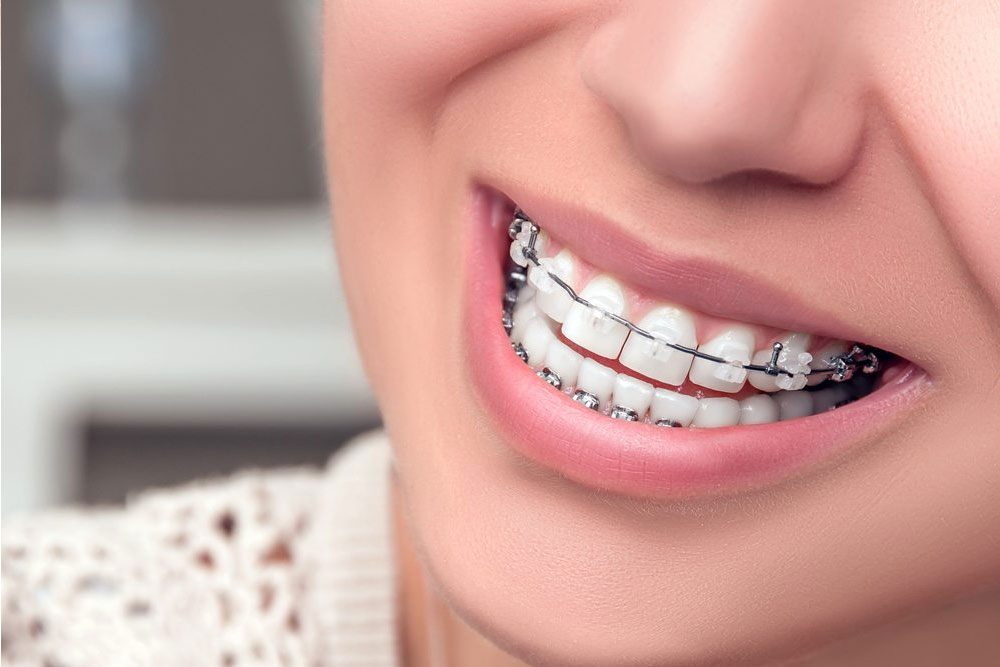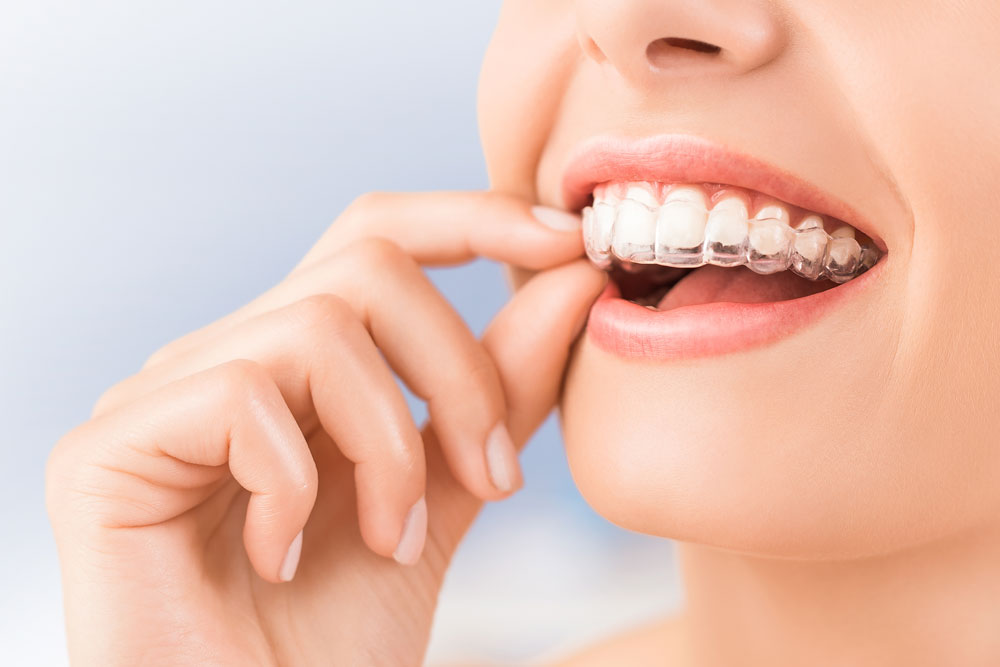Orthodontics is a branch of dentistry specializing in the diagnosis, prevention, and treatment of jaw, face and bite irregularities (malocclusions*). Orthodontic treatment is provided by an oral health care provider known as an Orthodontist, who has typically completed two to three years of additional training beyond dental school.
Recent years have brought about many changes within the dental industry, specifically with regards to orthodontic treatment and care. Now more than ever patients are experiencing fewer incidences of cavities and missing teeth due to the heightened awareness of fluoride use and preventative dentistry. This increasing awareness of the health and look of a patient’s smile has fueled the desire for many to seek out orthodontia not only as a medical necessity but for cosmetic reasons as well.
Orthodontics can help you have the healthy, straight, beautiful smile you’ve been waiting for!
*Malocclusion is the technical term for teeth that don’t fit together correctly. Malocclusions not only affect the teeth but also the appearance of the face. Most malocclusions are inherited; however, some are due to acquired habits such as thumb sucking and tongue thrusting. The spacing left from an adult tooth being extracted or an early loss of a baby tooth can also contribute to a malocclusion.
Braces for Children
Many children are ambivalent about getting braces. On the one hand, they like the idea of perfect teeth, but on the other hand, they are nervous about whether the braces will cause pain and discomfort. The good news is that the placement of orthodontic braces is not at all painful, and the end result will be a beautiful straight smile.
Although patients of any age can benefit from orthodontic braces, they tend to work much quicker on pre-teens and teenagers since they are still experiencing jaw growth. The American Association of Orthodontists (AAO) recommends that children should first see an orthodontist around the age of seven years old. An orthodontic examination may be beneficial before age seven if facial or oral irregularities are noted.
What Causes misalignment of teeth?
Poorly aligned teeth often cause problems speaking, biting, and chewing. Most irregularities are genetic or occur as a result of developmental issues. Conversely, some irregularities are acquired or greatly exacerbated by certain habits and behaviors such as:
- Mouth breathing
- Thumb or finger sucking
- Prolonged pacifier use
- Poor oral hygiene
- Poor nutrition
What’s involved when a child gets braces?
The orthodontist initially conducts a visual examination of the child’s teeth. This will be accompanied by panoramic x-rays, study models (bite impressions), and computer-generated images of the head and neck. These preliminary assessments are sometimes known as the “planning phase” because they aid the orthodontist in making a diagnosis and planning the most effective treatment.
In many cases, the orthodontist will recommend “fixed” orthodontic braces for a child. Fixed braces cannot be lost, forgotten, or removed at will, which means that treatment is completed more quickly. Removable appliances may also be utilized, which are less intrusive, and are generally used to treat various types of defects.
Here is a brief overview of some of the main types of orthodontic appliances used for children:
- Fixed braces – Braces comprised of brackets that are affixed to each individual tooth, and an archwire that connects the brackets. The brackets are usually made of metal, ceramic, or a clear synthetic material that is less noticeable to the naked eye. After braces have been applied, the child will have regular appointments to have the braces adjusted by the orthodontist. Orthodontic elastic bands are often added to the braces to aid in the movement of specific teeth.
- Headgear – This type of appliance is most useful to treat developmental irregularities. A headgear is a custom-made appliance attached to a wire that is worn to aid in tooth movement. A headgear is intended to be worn for 12-20 hours r each day and must be worn as recommended to achieve good results.
- Retainers – Retainers are typically utilized in the third phase (retention phase). When the original malocclusion has been treated with braces, it is essential that the teeth do not regress back to the original misalignment. Wearing a retainer ensures the teeth maintain their proper alignment, and gives the jawbone around the teeth a chance to stabilize.
Braces for Adults
Orthodontic braces were historically associated with teenagers. Today, an increasing number of adults are choosing to wear braces to straighten their teeth and correct malocclusions (bad bites). In fact, it is now estimated that almost one-third of all current orthodontic patients are adults.
Orthodontic braces are predictable, versatile, and incredibly successful at realigning the teeth. Braces work in the same way regardless of the age of the patient, but the treatment time is greatly reduced in patients who are still experiencing jaw growth and have not been affected by gum disease. In short, an adult can experience the same beautiful end results as a teenager, but treatment often takes longer.
Can adults benefit from orthodontic braces?
Absolutely! Crooked or misaligned teeth look unsightly, which in many cases leads to poor self-esteem and a lack of self-confidence. Aside from poor aesthetics, improperly aligned teeth can also cause difficulties biting, chewing, and articulating clearly. Generally speaking, orthodontists agree that straight teeth tend to be healthier teeth.
Straight teeth offer a multitude of health and dental benefits including:
- Reduction in general tooth decay
- Decreased likelihood of developing periodontal disease
- Decreased likelihood of tooth injury
- Reduction in digestive disorders
Fortunately, orthodontic braces have been adapted and modified to make them more convenient for adults. There is now a wide range of fixed and removable orthodontic devices available, depending on the precise classification of the malocclusion.
The most common types of malocclusion are underbite (lower teeth protrude further than upper teeth), overbite (upper teeth protrude further than lower teeth), and overcrowding, where there is insufficient space on the arches to accommodate the full complement of adult teeth.
Prior to recommending specific orthodontic treatment, the orthodontist will recommend treatment of any pre-existing dental conditions such as gum disease, excess plaque, and tooth decay. Orthodontic braces can greatly exacerbate any or all of these conditions.
What are the main types of orthodontic braces?
The following are some of the most popular orthodontic braces:
- Traditional braces – These braces are strong and tend not to stain the teeth. They are comprised of individual brackets which are cemented to each tooth and accompanied by an archwire that constantly asserts gentle pressure on the teeth. Traditional braces are generally metal but are also available in a clear synthetic material and “tooth-colored” ceramic. The ceramic brackets are generally more comfortable than the metal alternative but can become discolored by coffee, wine, smoking, and certain foods.
- Invisalign® – Invisalign aligners are favored by many adults because they are both removable and invisible to onlookers. Invisalign® aligners are clear trays and should be worn for the recommended amount of time each day for the quickest results. Invisalign® aligners are more comfortable and less obtrusive than traditional braces, but also tend to be more costly. Learn more about Invisalign®.



